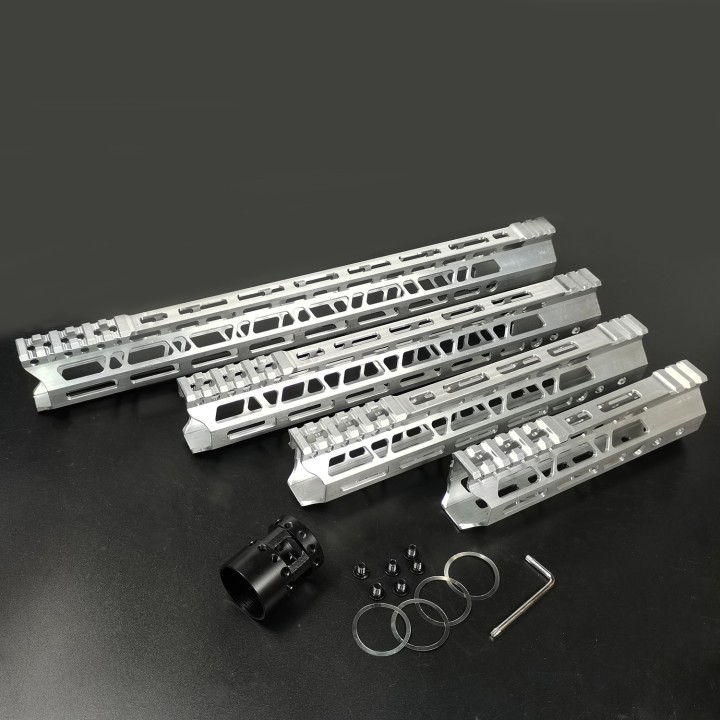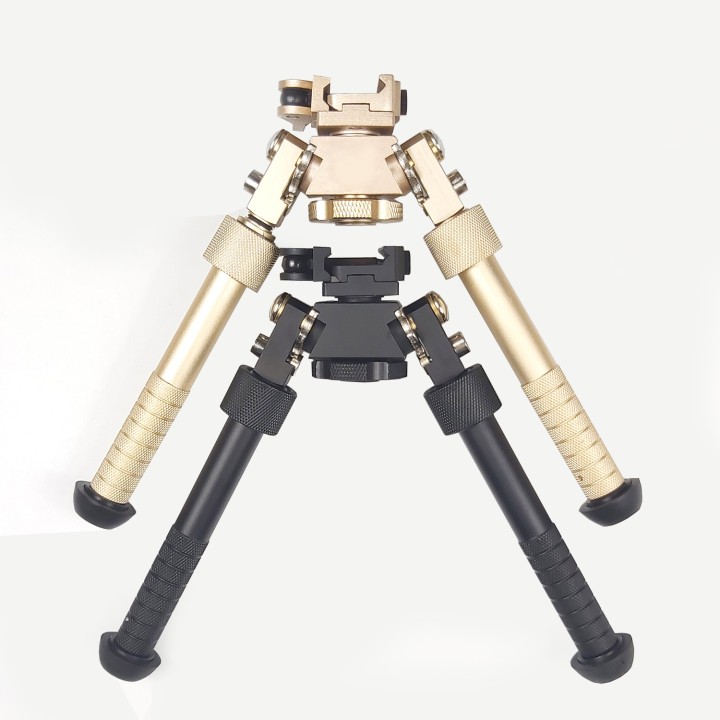In a sea of AR-15s, it can be tough to find the best fit. If you’re looking for a serious duty gun, I would like to present the SIG Sauer M400 SDI X-Series. There is a lot going on and a lot to love about this AR, along with a few things I’d change. Let’s dive in to find out why the M400 SDI should be a candidate for your next AR-15.
Table of Contents Video Review Development Design Basics Muzzle Devices SilencerCo Chimera 300 Barrel Profile & Gas System Upper & Lower Receiver SIG Sauer Tango MSR Performance Pros & Cons Conclusion Antenna Mount

The SIG M400 dates back over a decade and first appeared on the civilian market as a traditional-looking M4. SIG’s early version of the AR-15 featured a carbine-length gas system, a fixed front sight base, and traditional mil-spec furniture.
A few years ago, the M400 series got an upgrade with the Tread line. The Tread brought modernization to the M400 with a free-float handguard, a mid-length gas system, and Magpul furniture.
In 2022, SIG designed a competition M400 with the help of elite competition shooter Daniel Horner. Dubbed the DH3, it built on the Tread design with an upgraded trigger, competition muzzle device, a competition stock, and an upgraded lower.
While the DH3 is quick and capable of precise accuracy, its design doesn’t lend well to duty use. This drove SIG to tailor a new and different tactical rifle, and the M400 SDI X-Series was born.
The SIG M400 SDI X-Series is a 5.56x45mm-chambered AR-15 that features a 16-inch barrel with a 1:7 twist rate. It has ambidextrous controls, a free-floated M-LOK handguard, a Picatinny top rail, and a proprietary muzzle device.
Building on DH3 and Tread upgrades, this rifle design falls more on the premium side of the AR market. Let’s take a deeper dive into what works and what doesn’t on this rifle.
Starting at the front, the SDI features a compensated AR birdcage. When a muzzle device is designed to do two very different tasks, it does them both with mediocre results. I do not believe in the need for a compensator or muzzle brake on a duty 5.56 rifle. The intermediate cartridge is naturally soft-shooting and does not need taming.
This is one of the few parts of the rifle that I opted to change in favor of the Tread’s pronged flash hider.
This .30-caliber quick-detach suppressor is an outstanding "do-it-all" kind of suppressor. While it is not a 5.56 suppressor nor as quiet as it could be, I found it to be an excellent companion for AR shooting. The combination of the design and .30-caliber opening reduces the back pressure from the gas.
The Chimera easily mounts to a three-chamber muzzle brake. The muzzle device mounts are inexpensive, making it easy to buy several and move the can from platform to platform.
The one fault in the can is that the finish that quickly deteriorated in spots, although I will give it a break as I shot a high volume of fire in a short amount of time. Aesthetically, I love the look of the worn finish on a suppressor.
The barrel and gas system are simple but important upgrades. The barrel has a consistent profile and lacks the gimmick lightening cuts that we see on many modern ARs.
The M400 SDI uses a 15-inch free-float M-LOK handguard that extends to the muzzle. My one complaint about the handguard is the lack of a sling mounting system. On a premium AR, I expect basic sling mounts. I would have liked to see the receiver and handguard use the same QD mounts as SIG’s MCX line. I mounted a small BCM QD sling attachment on the rail to accommodate my two-point sling.
The biggest upgrade in the rifle is the thoughtfully designed ambidextrous lower receiver. Companies often make things ambidextrous with no thought put into the placement of the controls, but not so with the SDI. It features a traditional bolt hold/bolt lock on the left side of the receiver, accompanied by a left-mounted magazine release and a traditional AR safety switch.
The right side of the receiver features an ambi safety switch and an extended magazine release. There is an added bolt hold/bolt release above the magazine release, giving right-handed users an easy way to operate the bolt with their trigger finger. There are many ambidextrous bolt controls on the market, such as the Magpul B.A.D. lever, but they are often placed inside the trigger guard. I prefer to keep the trigger guard clear of any actions outside of squeezing the trigger.
The lower receiver has a flared mag well for easier mag changes. SIG also used the popular Magpul SL stock, a slime, six-point adjustable stock with a QD sling mount. The upper receiver features an ambidextrous charging handle that's easily actuated from either side.
The pistol grip is reminiscent of the X-Series P320 and P365 handguns and features a straighter angle than traditional AR pistol grips. The grip is textured but not too aggressive, making for a comfortable shooting experience.
The trigger is one of the most important parts of a rifle, especially if it is going to compete in the upper echelon of the AR market. SIG opted to use its own Flat Blade Match trigger, with an advertised 5-pound pull weight. This is an exceptional trigger choice and feels closer to 4 pounds.
There is very little take-up in the trigger pull, a firm and clear wall, a crisp and clean break, and a fast and short reset. The flat trigger face is comfortable, and the whole design lends itself well to rapid and accurate shooting.
The only real mounted accessory is the SIG Sauer Tango MSR 1-8X rifle scope. While I do not have much experience with Low Power Variable Optics (LPVOs), I am pleased with the experience thus far.
Here is a more in-depth review of how the SIG Sauer Tango rifle optic performs. For me, the optic worked well and was a great match for this type of rifle build.
In total, I have put well north of 2,000 rounds through this rifle, half of those suppressed. I used ammunition from TulAmmo, Buffalo Cartridge, Fiocchi, PMC, Australian Outback, and Barnaul. Some of the ammo was .223 Rem, while some was 5.56 NATO spec, with grain weights varying from 55 all the way up to 75.
I had only one malfunction: a split rim on a Barnaul .223 Rem round. This is an issue that I attribute more to the ammo than the rifle.
I did not oil or clean the rifle but used it as it came out of the box. I believe in running the rifle until failure to gauge the performance threshold. This sets the bar of expectation in case the rifle is pushed to its limits during duty use. Companies should put their best foot forward to the customer right out of the box.
I shot the rifle in the sub-0-degree snowy tundra of the Minnesota winter, along with the 100-plus degree Minnesota summer. The rifle performed flawlessly in all conditions.
Shooting the rifle on 1X magnification at 100 yards, I shot consistently around 1.5-2.5 MOA. I am not God’s gift to shooting, and I am a firm believer that most firearms are capable of higher feats of accuracy than the shooter. The design is well planned and the rifle is a joy to shoot.
This M400 is a Recce (Reconnaissance) style of rifle build. The rifle is light and can reach longer distances than some of the shorter barrel lengths. This is a great candidate for hunting, taking on long hikes, or serving in a duty/training capacity.
The SIG Sauer M400 SDI X-Series is by no means the cheapest AR on the market, but there is still great value in this factory build. I did a whole series on building ARs over purchasing them, and normally I am in favor of going that route. I think in the long run, building gives you more of what you want out of the rifle without wasting money on replacing factory parts.
This is one of the few cases where I would make an exception to that rule. After some extensive time on the range, the SDI is my favorite production AR on the market. This rifle is a better buy than many higher-priced options.
Stay in the know. Get Guns.com offers and news!! By signing up you agree to Guns.com's Terms and Conditions and Privacy Policy.
Need Help? service@guns.com Call (866) 582-4867

C308 Handguard Rail PO Box 1131 13800 Nicollet Blvd Burnsville, MN 55337 ©2024 Guns.com. All Rights Reserved